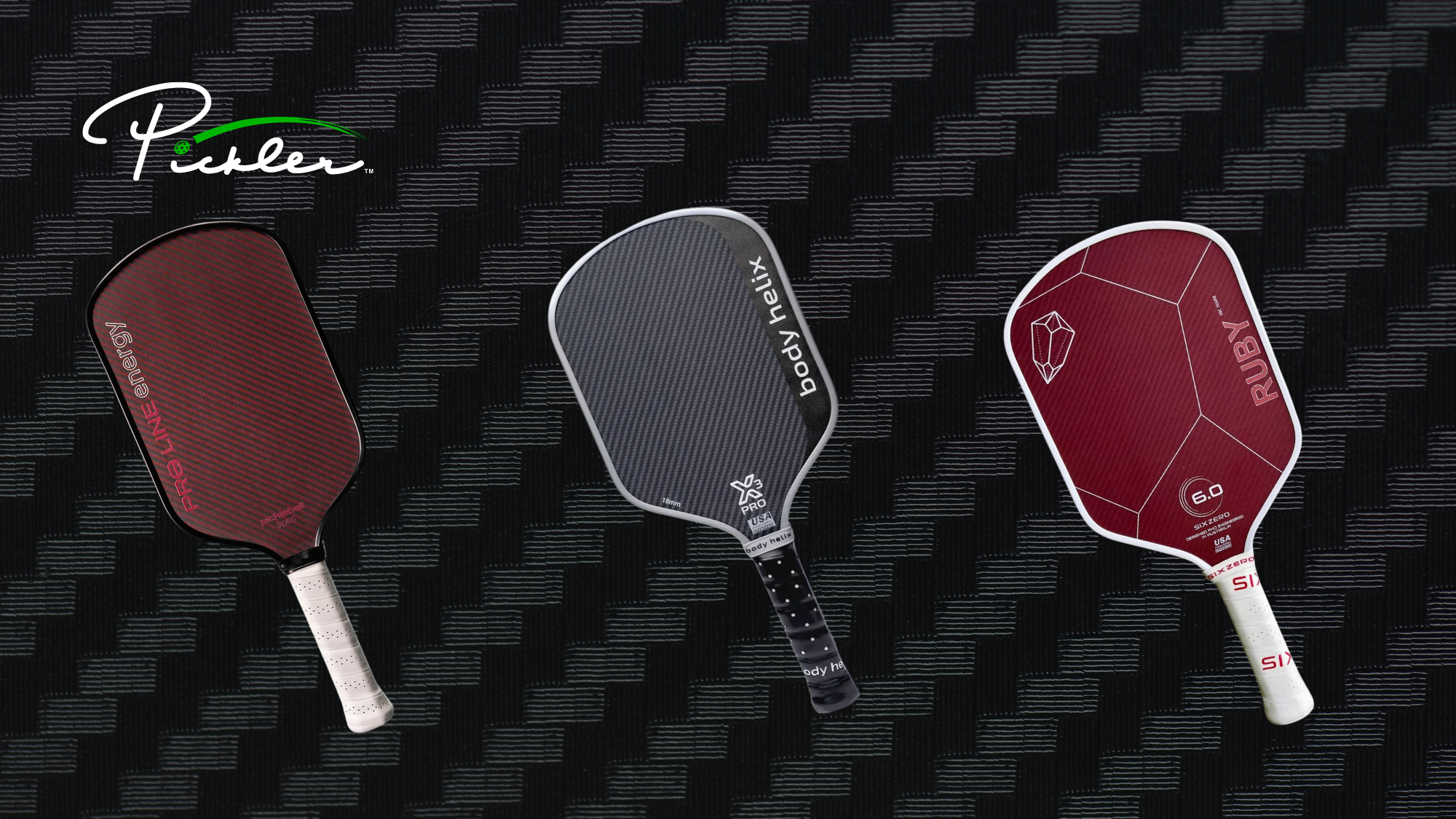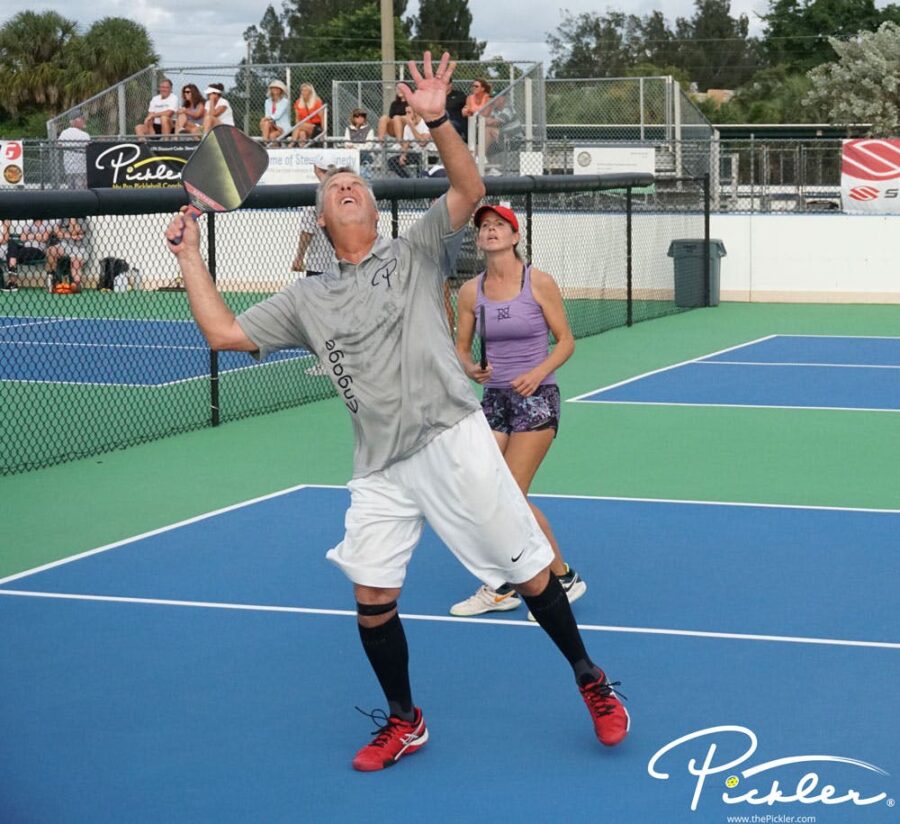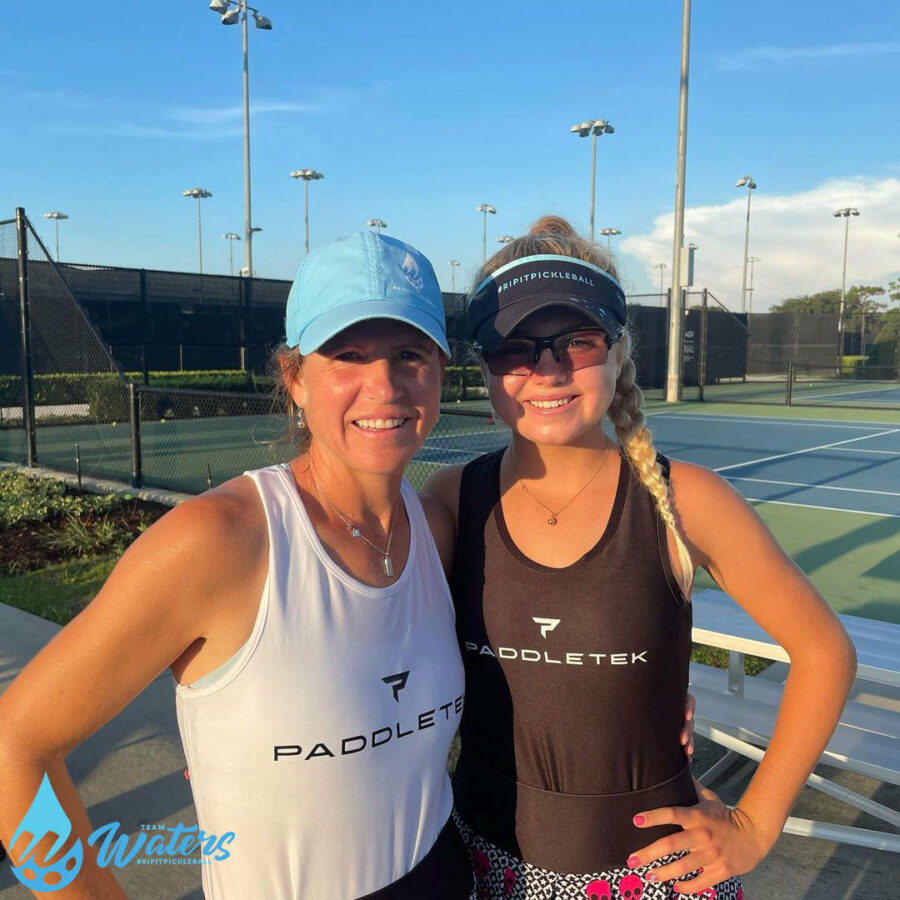It seems that almost all pickleball paddle manufacturers are moving toward carbon/Kevlar hybrid faces. The question is why? A simple answer could be – because everyone is doing it and there is a sense of FOBLO (fear of being left out).
A better answer could be – because a hybrid fabric provides more power, control, and durability to a paddle.
So, what are the three fabrics? My wife and I have all three, not for pickleball, but for our lightweight whitewater kayaks. If you think weight is not important, think about this – sometimes to get to a river, you have to trudge about a half mile carrying your boat. We have boats that weigh 43 pounds or more, and that’s a lot to carry. But with a Kevlar/Carbon hybrid, carrying a 22-pound boat is not a big deal. See the photo below of Donna holding her boat in one hand.

So, what do the fabrics look like?
This is Kevlar fabric.

This is “raw carbon” fabric.

This is Carbon/Kevlar Hybrid fabric on a roll.

WHAT IS KEVLAR? (The following is from the Multidisciplinary Digital Publishing Institute at https://www.mdpi.com/)
Kevlar is a strong, heat-resistant synthetic fiber first used commercially in the early 1970s as a replacement for steel in racing tires.
There is no one type of Kevlar and, in fact, there are many. Here are a few:
- Kevlar 29 – tough yarns for ballistic protection.
- Kevlar K129 – higher tenacity for ballistic applications
- Kevlar K149 – highest tenacity for ballistic, armor, and aerospace applications
- Kevlar AP – 15% higher tensile strength than K-29
- Kevlar XP – lighter weight resin and KM2 plus fiber combination
- Kevlar KM2 – enhanced ballistic resistance for armor applications
What kind of Kevlar is used in pickleball paddles? See below.
WHAT IS CARBON FIBER?
Carbon fiber is a material consisting of thin, strong crystalline filaments of carbon, essentially carbon atoms bonded together in long chains. The fibers are extremely stiff, strong, and light, and are used in many processes to create excellent structural materials.
WHAT IS A KEVLAR/CARBON HYBRID FIBER?
It is exactly what the name implies – a combination of carbon and Kevlar fabric woven together.’
WHAT ARE THE ADVANTAGES OF A CARBON/KEVLAR FARIC?
Here are some key aspects of Kevlar/carbon hybrid fabrics:
- Strength and Stiffness: Carbon fiber is known for its exceptional strength and stiffness, providing high-performance characteristics to the hybrid fabric. It offers excellent tensile strength, rigidity, and resistance to deformation under load. Kevlar also contributes to the overall strength of the hybrid fabric, providing good impact resistance and energy absorption properties.
- Lightweight: Both carbon fiber and KEVLAR fiber are lightweight materials, making carbon KEVLAR hybrid fabrics ideal for applications that require high strength and stiffness while keeping weight to a minimum. The combination of these fibers results in a fabric that offers an improved strength-to-weight ratio compared to using either material alone.
- Impact Resistance: KEVLAR fibers have excellent impact resistance and are known for their ability to absorb energy. When combined with carbon fibers in a hybrid fabric, they enhance the impact resistance of the composite. This makes carbon aramid hybrid fabrics suitable for applications that require both high strength and resistance to impact or dynamic loads, such as sports equipment, automotive parts, and protective gear.
- Vibration Damping: KEVLAR fibers have inherent damping properties, which can help reduce vibration and dampen resonant frequencies in the composite structure. The addition of aramid fibers in a hybrid fabric can contribute to improved vibration-damping characteristics.
It is important to note that the specific properties and performance of carbon aramid hybrid fabrics can vary depending on the fiber types, fiber content, fabric architecture, and manufacturing process.
COST?
Take it from me – the cost of a roll of carbon fiber or Kevlar is quite high. This means that paddles made with a hybrid face are going to become expensive. I have already seen one selling for over $300 (not going to buy it).
BENEFITS FOR PICKLEBALL PADDLES
(Thanks to Body Helix for this information)
Power
Carbon Fiber: Carbon fiber is synonymous with power. Its stiffness and rigidity transfer energy efficiently from your swing to the ball, resulting in impressive shot speed and force. When you wield a carbon fiber paddle, you can expect to hit powerful drives and smashes with ease. This characteristic is particularly advantageous for players who prioritize an offensive playing style and love to put their opponents on the defensive.
Kevlar/Carbon: Kevlar/Carbon paddles, while still offering significant power, tend to be slightly more forgiving than pure carbon fiber paddles. The Kevlar component introduces an element of flexibility, which means that you can generate power without overexerting yourself. This feature makes Kevlar/Carbon paddles an excellent choice for players seeking a balance between power and control.
Winner: If raw power is your primary focus, a carbon fiber paddle takes the lead. However, for those who want a blend of power and control, Kevlar/Carbon paddles offer a compelling compromise.
Control
Carbon Fiber: While carbon fiber paddles are synonymous with power, they also provide impressive control. Their rigidity ensures that the ball responds predictably to your shots, allowing for consistent ball placement and accuracy. Players who have mastered their strokes can manipulate the ball precisely, thanks to the responsiveness of carbon fiber.
Kevlar/Carbon: Kevlar/Carbon paddles also deliver excellent control, but they tend to be slightly more forgiving. The Kevlar component provides a degree of flexibility, which can help newer players or those who prefer more control over their shots. The balance between power and control is one of the defining features of Kevlar/Carbon paddles.
Winner: If you are seeking a forgiving paddle with reliable control, Kevlar/Carbon takes a slight lead. For those with advanced skills and a focus on precision, carbon fiber remains a strong contender.
Durability
Carbon Fiber: Carbon fiber is highly durable and resistant to damage. Its innate strength ensures that it can withstand impacts, paddle-to-paddle collisions, and the occasional mishits. Carbon fiber paddles have a reputation for their longevity and can endure intense gameplay without showing signs of wear and tear.
Kevlar/Carbon: Kevlar is renowned for its exceptional durability and impact resistance. When combined with carbon, it further enhances the paddle’s longevity. Kevlar/Carbon paddles are known for their ruggedness, making them an excellent choice for players who engage in vigorous and competitive matches frequently.
Winner: In the durability category, Kevlar/Carbon holds the edge due to the robust characteristics of Kevlar. However, it’s important to note that both materials offer excellent durability.
Lightweight Design
Carbon Fiber: Carbon fiber is inherently lightweight, contributing to the overall agility and maneuverability of the paddle. Lighter paddles are less taxing on your arm, reducing the risk of fatigue during extended matches. They also allow for quick reactions and adjustments, especially during fast-paced net exchanges.
Kevlar/Carbon: Kevlar/Carbon paddles also maintain a relatively lightweight design, although they may be slightly heavier than pure carbon fiber paddles. The inclusion of Kevlar introduces an element of flexibility, which can slightly affect the overall weight. However, Kevlar/Carbon paddles remain highly maneuverable and responsive.
Note: Body Helix uses .45 MM thick Kevlar 29 in its paddle face. See above.
MY OBSERVATIONS
- Hybrid paddles have a bit more power than raw carbon, or at least the same power
- Hybrid paddles provide excellent control, a bit better than raw carbon
- Spin – Ah ha. Hybrid paddles really don’t require grit (in my opinion). Yes, I only have two (so far) but it seems to me that the way the paddle surface gives, even just a little bit, is enough for you to create spin.
CONCLUSION
Are hybrid-faced paddles worth it? If you are 3.5 and above, yes. If not, don’t waste your money.
NOTE
As I said, your paddle is not going to stop a bullet. Also, because the paddle faces are quite thin, they can be pierced by a sharp object (like our kayaks can be pierced by a ridiculously sharp rock – we can repair our kayaks, but repairing a paddle might invalidate it for tournament use). So, if your paddle comes with a cover – USE IT when you store it!
OTHER READING
There is a lot of information here (it is super technical): https://www.mdpi.com/search?q=kevlar



